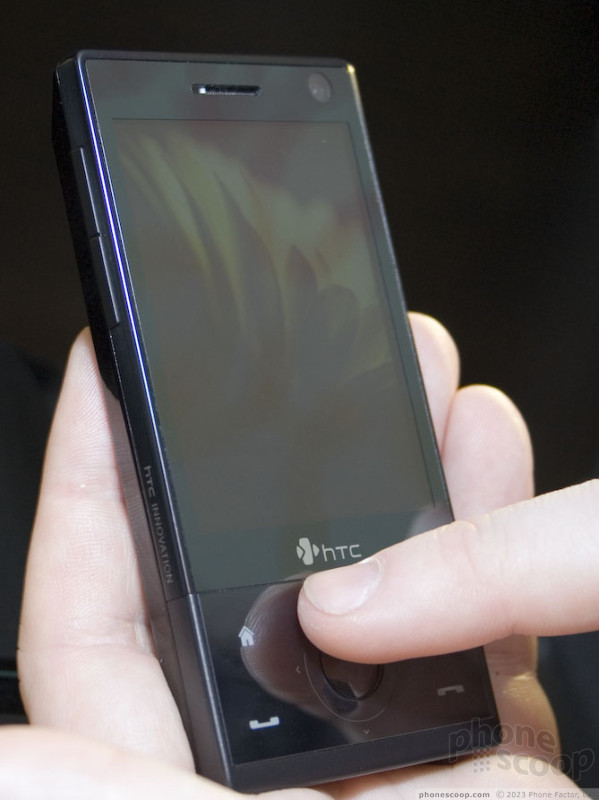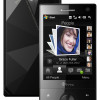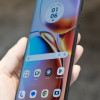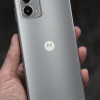HTC Touch Diamond
In the speech announcing the Touch Diamond, HTC touted its thin profile. Much like Apple with the MacBook Air, they made some compromises to make it as thin as it is. You won't find a standard round headset jack or memory card slot, for example, and the battery is only 900 mAh, which is quite small for a phone with a large, power-hungry VGA touch display. (Unsuprisingly, HTC claims they've optimzed power usage so the small battery won't be a problem. We'll see.)
The hardware of the Touch Diamond is indeed thin, but only enough to be competitive with, say, the iPhone. It's not "remarkably thin" or anything like that. It is a nice size in the other dimensions. The width is especially nice; it's thinner than much of the competition. The design on the back might look like something done with texture, but it's actually a terrain of slightly different angled surfaces. It doesn't create a funny shape or feel, though; the tallest edge only sticks out 0.25 mm.
It's very light and comes with a super-slick case.
Like so many phones these days, it's an absolute fingerprint magnet. It took over a minute of polishing before we could take decent photos of it.
The controls are mostly decent. Just like many new phones (I'm thinking Nokia N96 here) the keys are physical keys, but a solid sheet of thin black plastic covers them, and sheer distance is what separates the keys enough to tell them apart. This works fine for the home, back, send and end keys, but not so great for the d-pad. Up and down are a bit stiff to press, but they're usable. The left and right keys, however, are very difficult to press reliably. All directions of the d-pad are so stiff that, at first, I didn't think there were physical keys at all. Bottom line: it's not a great d-pad. Of course you can do just about everything by touching the screen, but those that prefer the d-pad alternative might be disappointed.
The VGA display is incredible. Packing that much resolution into such a small area makes pixels so small you'd need a microscope to see them. That means photos and web pages appear with sharpness and detail that you have to see to believe. You can zoom all of the way out and still read the text on most web pages... if your eyes can even handle it.
The touch screen is not capacitive like the iPhone, so you have to mind how hard you press. It can act unreliably if you press too lightly or too hard.
The Diamond is designed for your fingers, but it does have a stylus. The design of the stylus is actually quite clever. A magnet holds it in place so it doesn't sneak away when you're not looking. The phone also knows when you remove the stylus, so it will automatically unlock the screen if it's locked, and open up a notes field if you were looking at a contact, for example.
The phone will come in multiple radio configurations. The first one is for Europe and Asia, where it will launch in June. That version doesn't have GSM 850, nor is it 3G compatible with US networks. However HTC made it clear that there will be other versions, and they plan to launch the Diamond with most major carriers worldwide, including North America.














 HTC Announces Touch Diamond
HTC Announces Touch Diamond
 Hands On with the Motorola edge+ (2023)
Hands On with the Motorola edge+ (2023)
 Hands On with the 2023 moto g 5G & moto g stylus
Hands On with the 2023 moto g 5G & moto g stylus
 iPhone 15 Series Goes All-In on USB-C and Dynamic Island
iPhone 15 Series Goes All-In on USB-C and Dynamic Island
 Hands On with the Motorola razr and razr+ (2024)
Hands On with the Motorola razr and razr+ (2024)







